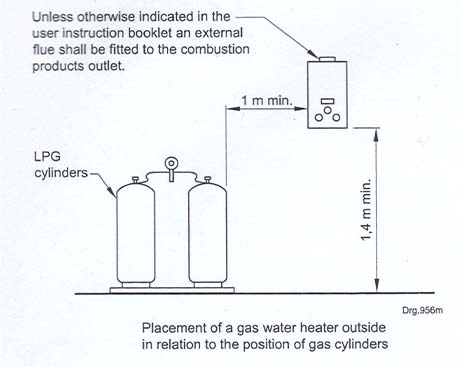

LPG & the law
LP Gas & the Law
Please note these are only some of the SANS10087 codes and can only be performed by a registered LP gas installer, the following below is only an indication of what are required for LPG installations:
- Only a registered and competent approved installer are the only persons allowed to install, maintain, repair or alternate on a LPG gas line or issue a certificate of conformity.
- If you install the appliance yourself you will lose the guarantee on the product and may be liable for prosecution if someone gets hurt or property are damaged.
- On completion of any repairs or installation a pressure test must be carried out and a certificate of conformity must be issued.
- All registered installers have an approved licensed card if ever in doubt ask for it, or can be viewed at the SAQCC database.
- A registered installer has the right to refuse an existing installation maintenance, repair, alteration and extension or adding a new gas-point to the existing gas-line, unless a C.O.C can be shown or if the installation is not compliant according to SANS. Which a quotation can be requested by the gas company.
- All installations must have sign boards, which consist and indication of gas-flow direction, installers name, installers registration, date of installation, gas shut off valves points.
- Domestic gas lines is optional to be painted a light stone colour or get a sticker that indicates gas flow.
- Gas-lines in floor, wall or passing through must be sleeved or wrapped.
- All compression or threaded fittings are not allowed inside a roof, floor, wall or ground.
- All copper tubing passing through steel bats must be sleeved or wrapped.
- One may install a 1x9kg cylinder in a cupboard, as long as the cylinder is not located underneath the hob or an electrical point underneath the hob or in same cupboard as gas cylinder.
- One may install a 9kg cylinder in a cupboard, as long as a ventilation are provided on the cupboard door.
- All ball valves must be accessible.
- A shut off valve are not allowed inside an enclosed cage.
- If more than one appliances are connected, one must install a main shut off valve and install forever point a separate shut off valve.
- Only allowed class 1, 2, 3, copper tubing on gas line installations.
- One may not use copper tubing or pex pipe inside a roof unless its been sleeved to outside of a building with steel pipe sleeving or alternative of using CCST (tracpipe).
- Gas cages are optional on domestic installation, where it is a must on commercial installations which have public access.
- Rubber hoses on installation may not exceed a total length of 2 meters.
- Rubber hose may not pass through a wall.
- Rubber hose shall be in one piece and supply one appliance, and no joints, tee pieces, etc. are allowed.
- Gas lines in the ground must be at least 500mm deep where it has to be sleeved or wrapped.
- Galvanized pipe is not allowed for gas installations.
- No compression fittings are allowed inside a floor, wall, ground and roof.
- Pex pipe is cost effective and have lower value than copper-tubing and could cost up to half of the installation than copper tubing but live span is not nearly as long as compared to copper tubing and does not deliver a neat and professional installation as towards as copper tubing.
- Cylinder feeding separate installations must be 6m apart.
- Gas cylinders must be 7m away from any staircase.
- Gas cylinders not allowed within 3 walls.
- Gas cylinders not allowed underneath concrete roof.
- Gas cylinders not allowed underneath gas geyser.
- Gas cylinders must be placed 3m away from a thatch roof with a wall been built of 1,8m high of the back of the cylinders.
- Gas cylinders can be installed next to geyser with a minimum distance of 1m, which the bottom of the geyser must be at least 1,4 m of the ground.
- Gas cylinders must be 5m away from aircon, pumps, and distribution boards.
- Gas cylinders are not allowed inside of a garage where vehicles are parking.
- Gas cylinders 1m away from side of door and window.
- Gas cylinders can be placed underneath a window if the distance is more than 300mm from the valve to the bottom of the window, provided that a non-combustible roof is installed.
- Gas cylinders must be 1m away from an airbrick.
- Gas cylinders must be 1,5m away from an outdoor light.
- Gas cylinders must be 2m away from an open drain unless a wall is build that measure from the drain around the wall to the cylinder 2m.
- Electrical plugs/ sockets/ isolators must be a minimum of 200mm away from the side of the gas stove or gas hob.
- Gas cylinders may stand against a boundary wall if the boundary wall is a firewall.



CONTACT NUMBERS
( +27 ) 073 322 2248 – Technical
( +27 ) 082 048 7952 – Admin
Mon to Fri: 08:00 am to 20:00p.m.
Sat: 08:00 am to 16:00 pm
Sun: Closed
Email: info@dcgas.co.za